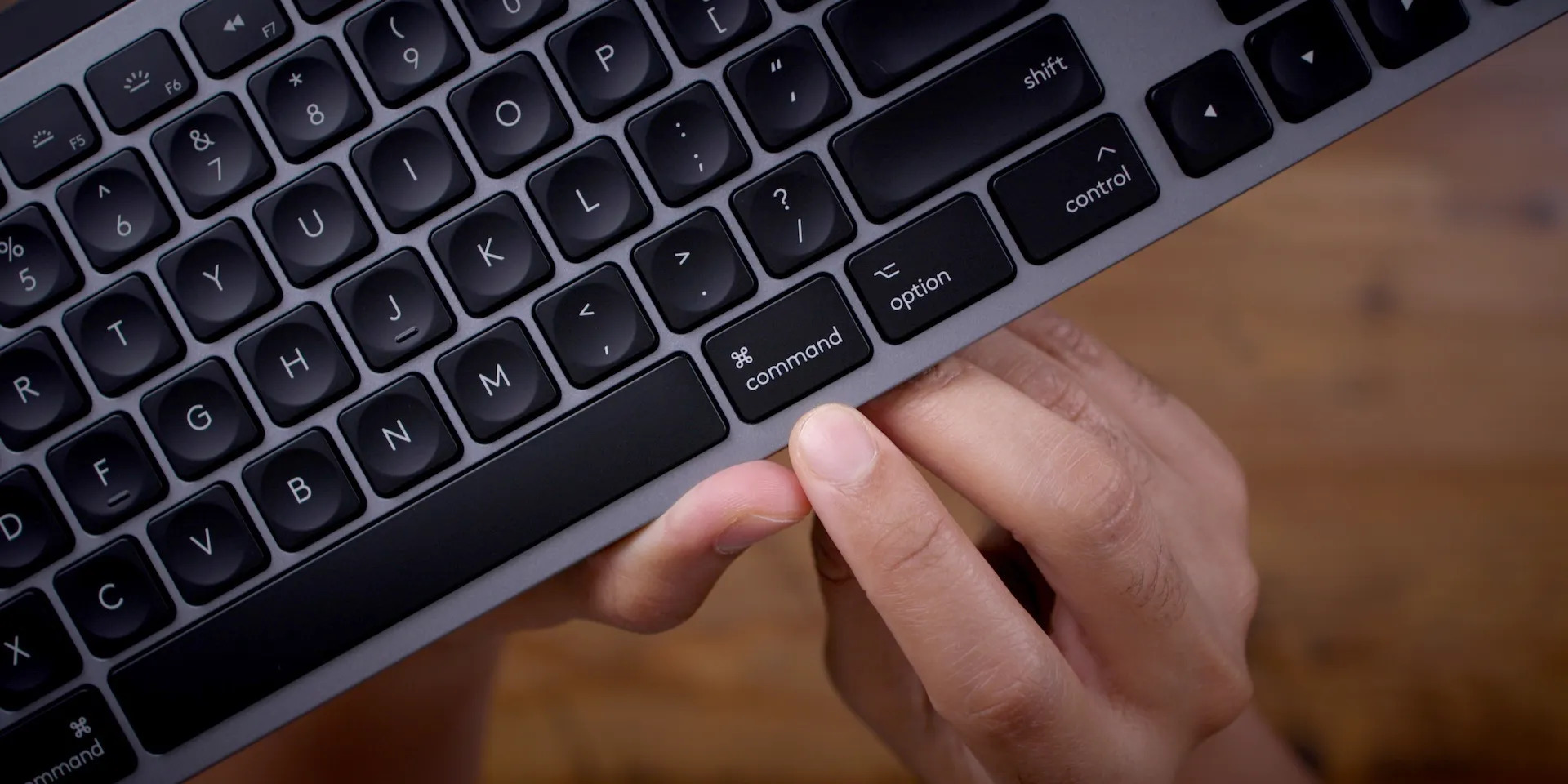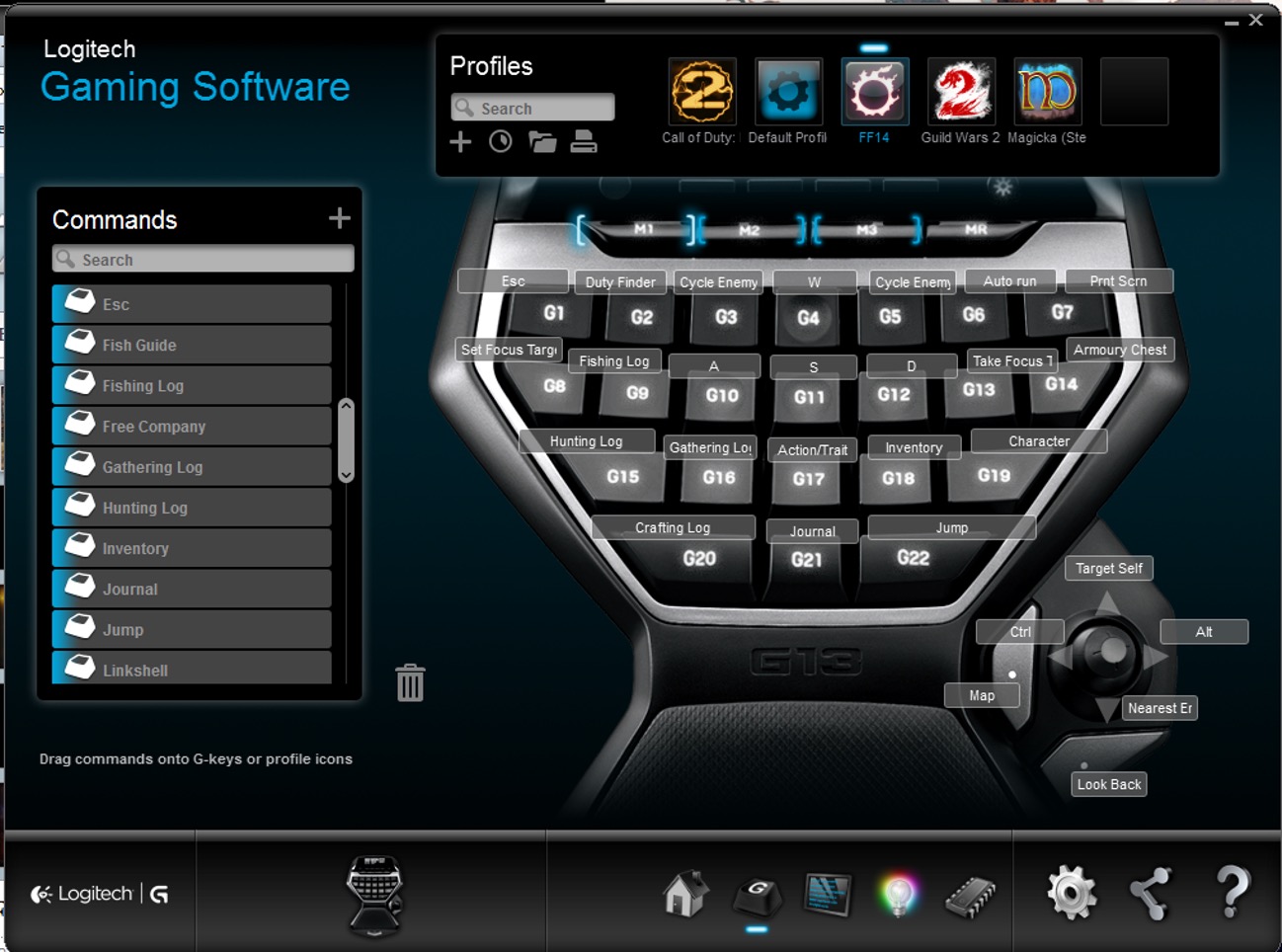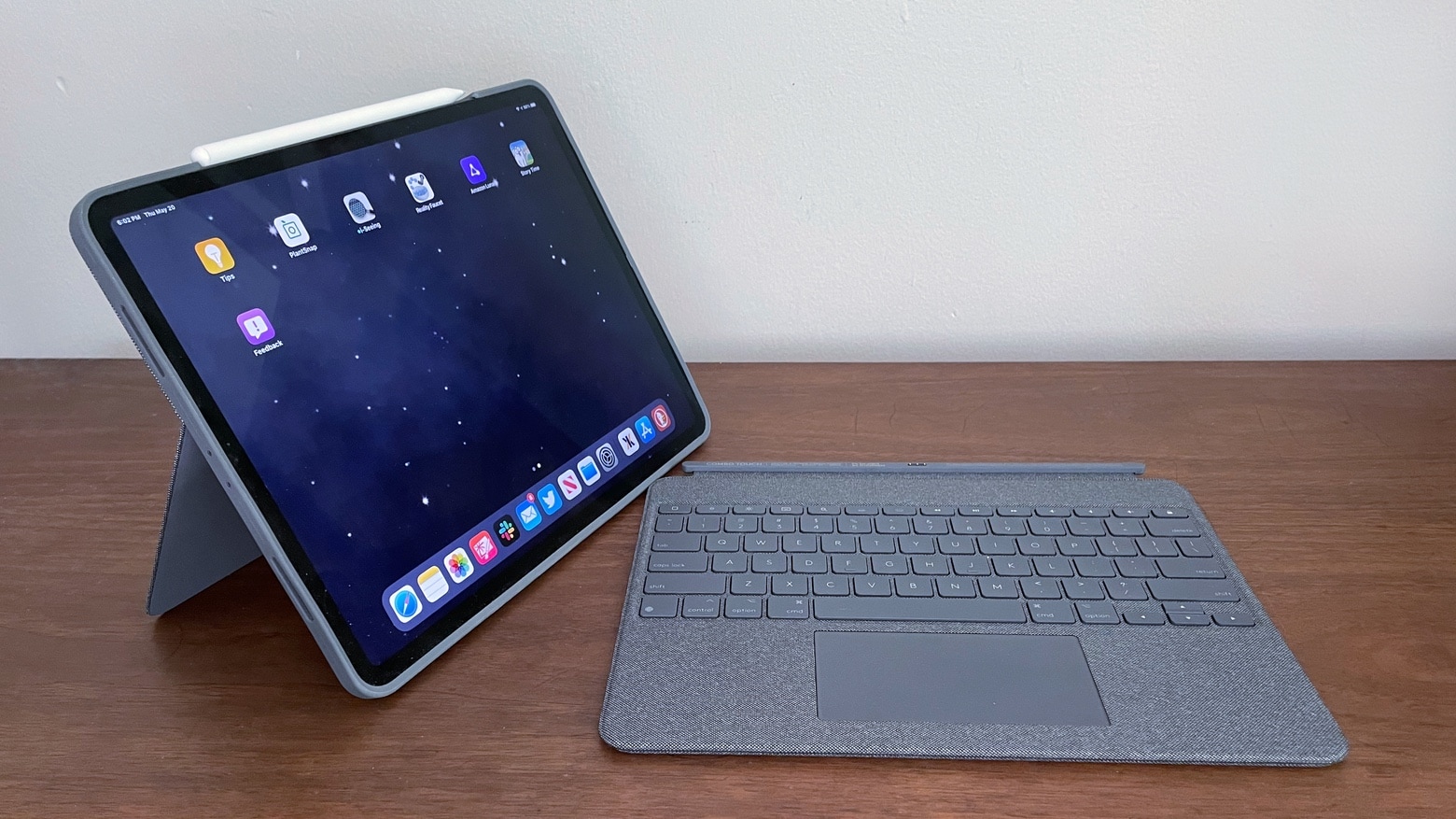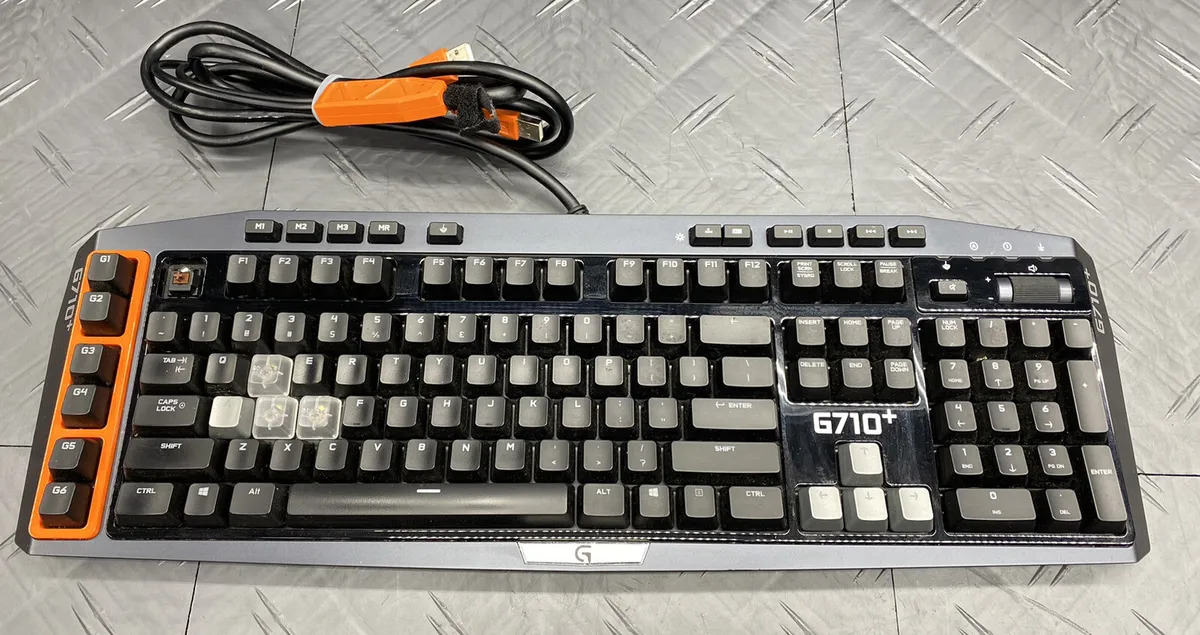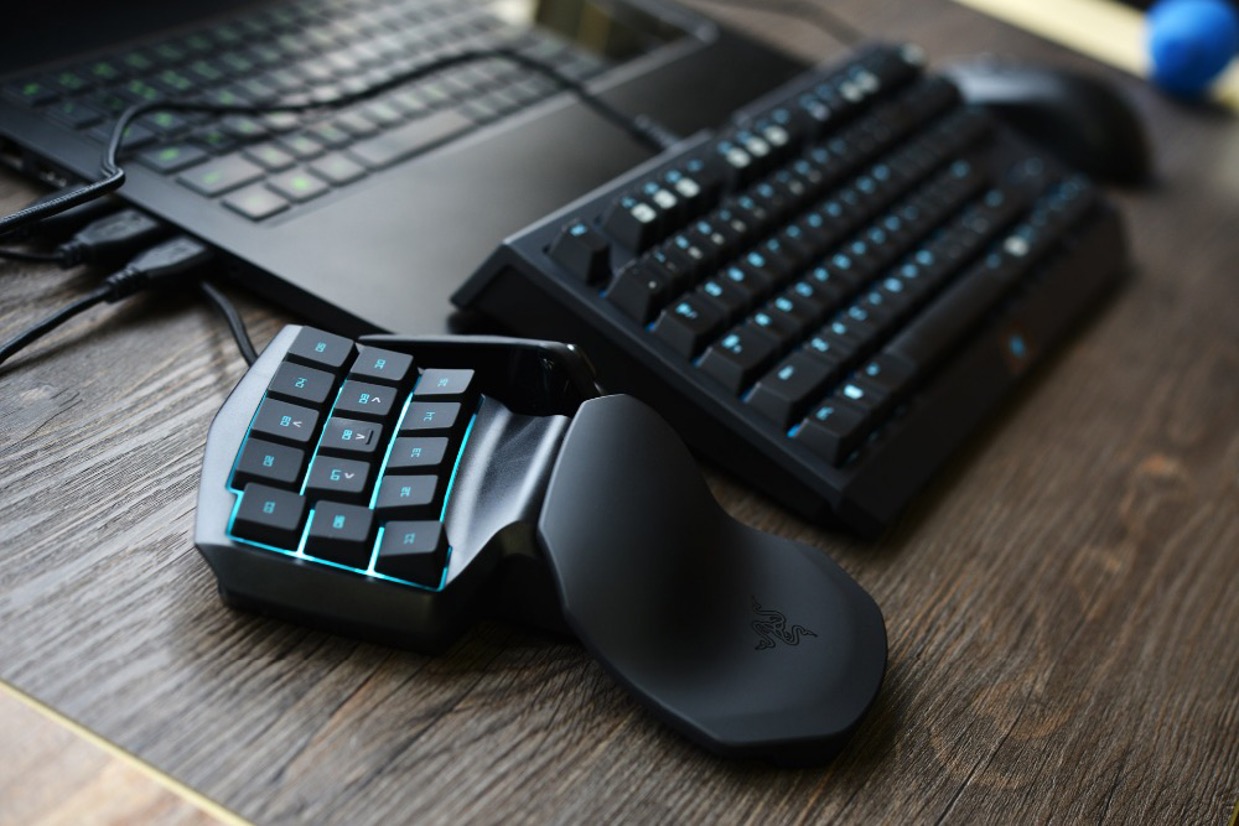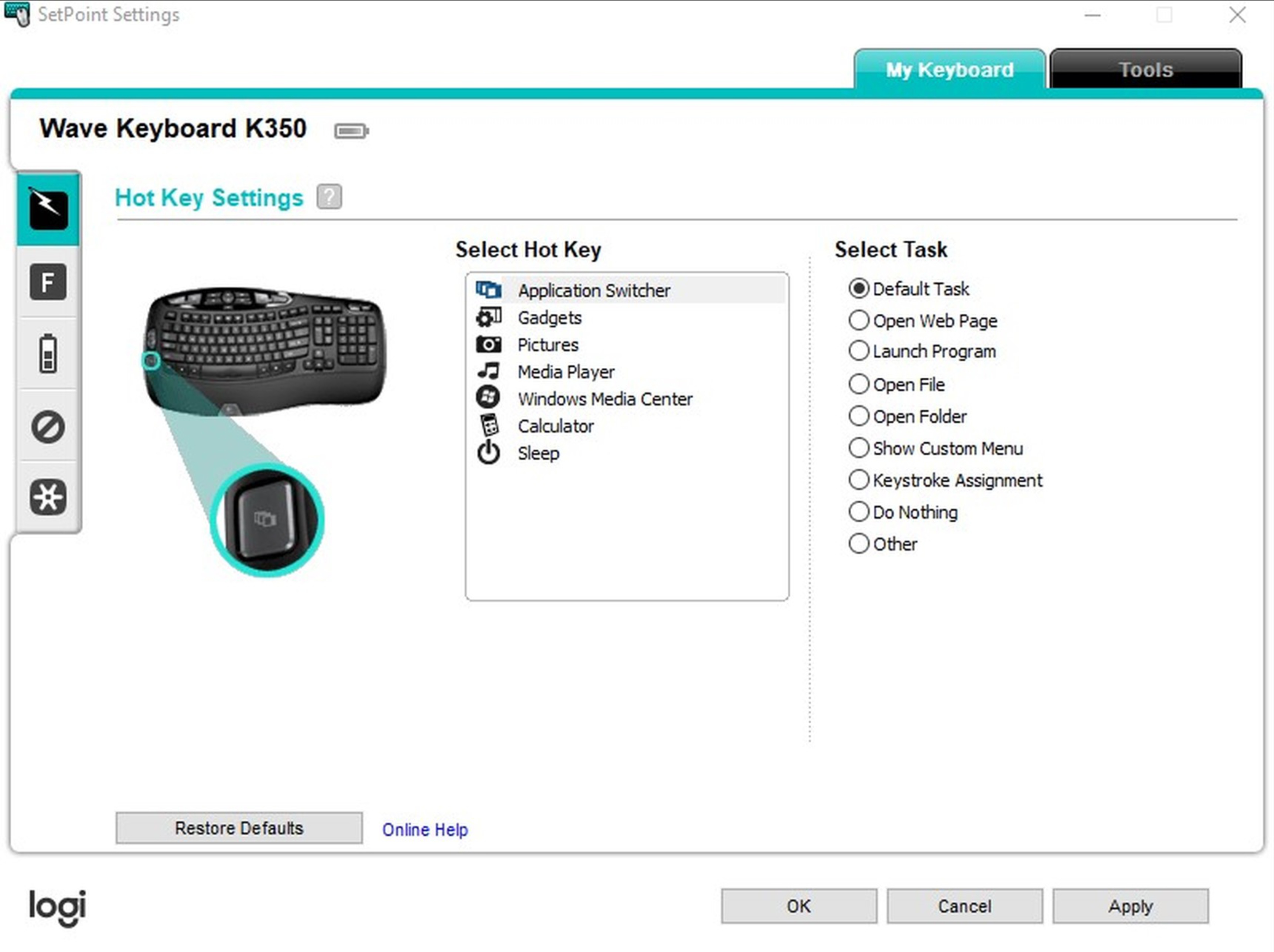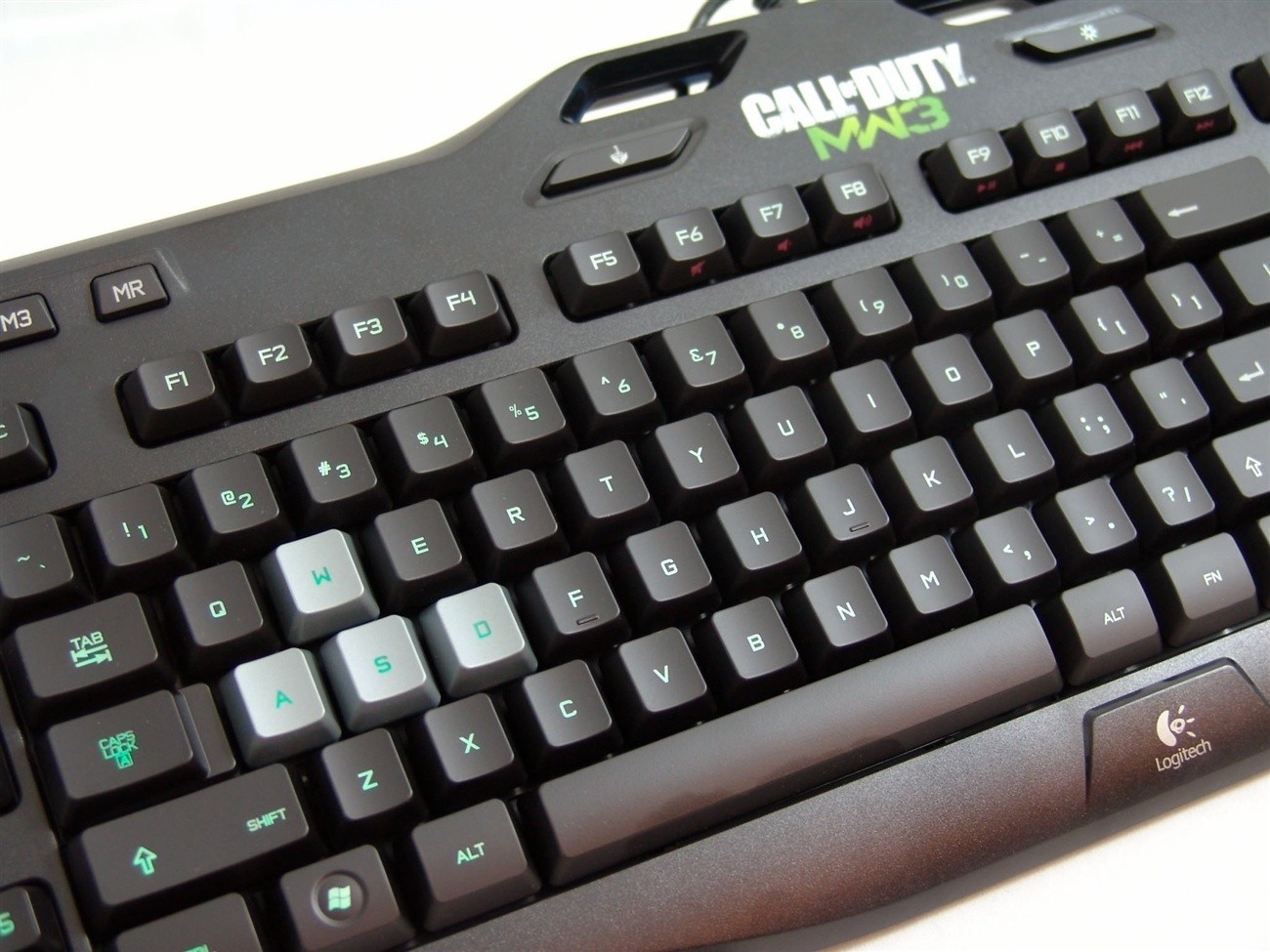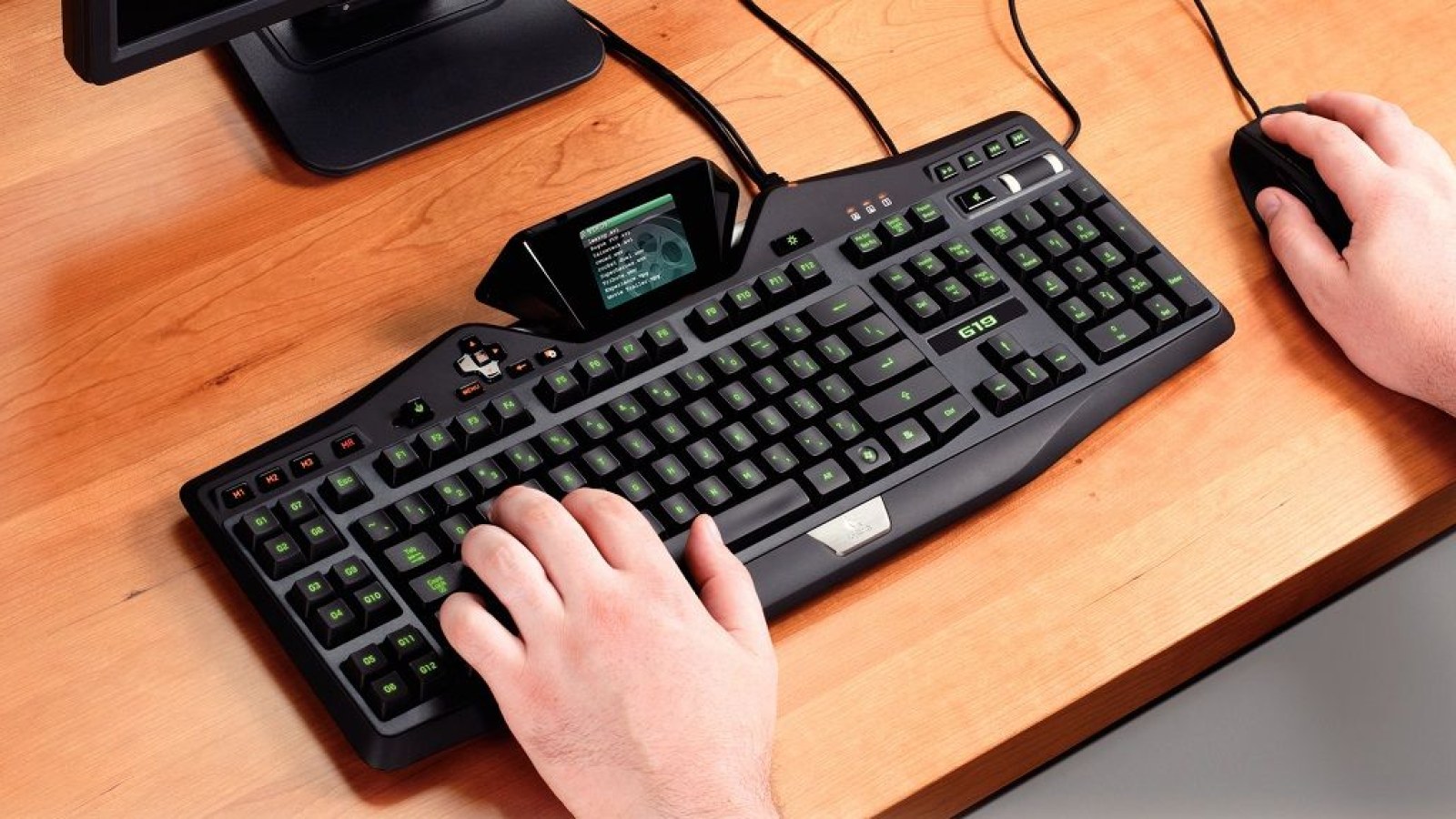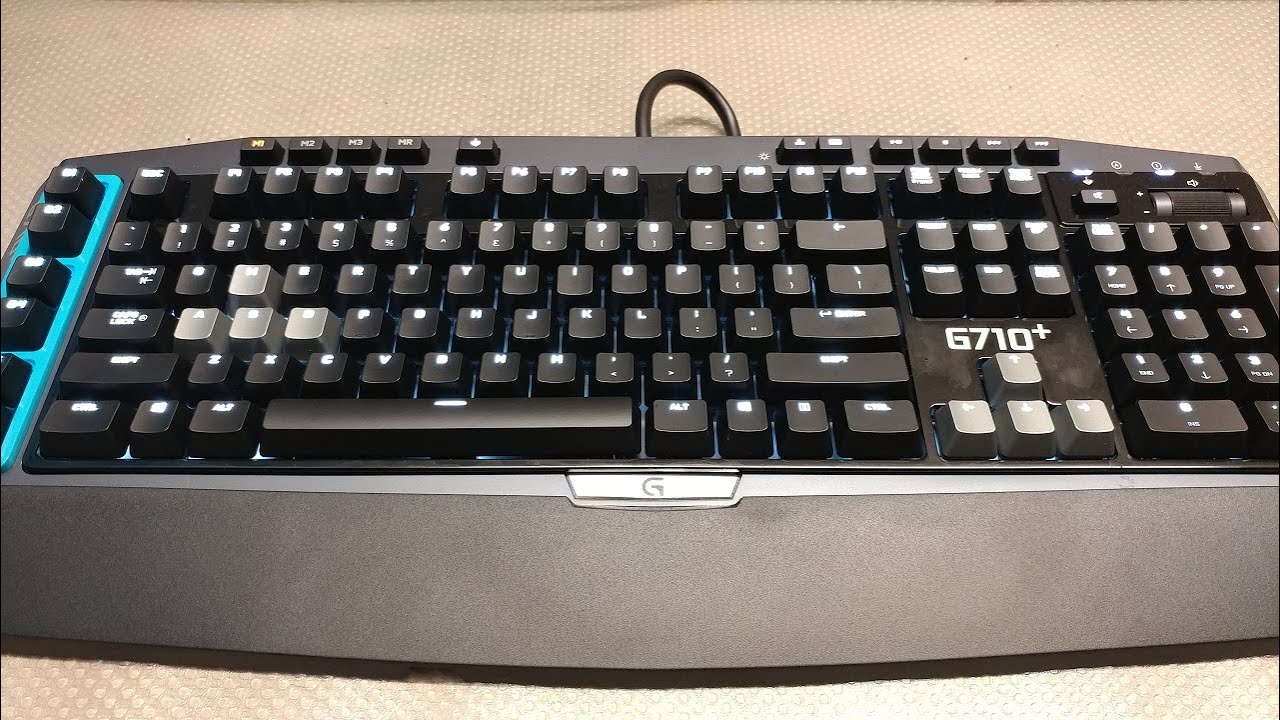Introduction
Welcome to this guide on how to use the Command key on a Logitech keyboard. The Command key, also known as the “Cmd” key or the “Apple key,” is a key found on Mac keyboards that plays a crucial role in executing various commands and shortcuts.
Whether you’re a seasoned Mac user or new to the platform, understanding how to effectively utilize the Command key can greatly enhance your productivity and efficiency. By mastering its functions, you’ll be able to navigate your computer quickly, perform common tasks, and access various features with just a few keystrokes.
In this article, we will explore what the Command key is, its different uses, how to customize it on Logitech keyboards, and provide a list of useful Command key shortcuts. Additionally, we will address common issues users may encounter with the Command key and offer troubleshooting tips to resolve them.
So, whether you’re an avid gamer, a content creator, or a business professional, read on to discover the power and versatility of the Command key on your Logitech keyboard.
What is the Command key?
The Command key is a modifier key found on Mac keyboards, represented by a symbol resembling a four-leaf clover or propeller. This key plays a fundamental role in executing various commands and shortcuts on macOS.
The Command key was first introduced by Apple in the 1980s as a dedicated key to trigger menu commands in their graphical user interface. Over the years, it has become an integral part of Mac navigation and functionality.
One of the primary purposes of the Command key is to execute keyboard shortcuts. When combined with other keys, such as letters or special characters, it performs specific functions. For instance, pressing Command + C simultaneously will copy selected content, while Command + V will paste it.
In addition to shortcuts, the Command key also provides access to essential features and system commands. By pressing the Command key alone, users can activate keyboard shortcuts like Command + Space to open the Spotlight search or Command + Tab to switch between open applications.
Furthermore, the Command key is utilized in conjunction with other modifier keys, such as Shift and Option, to perform more advanced actions. For example, holding down Command + Shift + 3 captures a screenshot of the entire screen, while Command + Option + Esc opens the Force Quit Applications window.
The Command key is a distinctive aspect of the Mac experience and is widely supported by applications across the macOS ecosystem. It serves as a central command hub, empowering users to navigate quickly, execute tasks efficiently, and access various system functions without the need for excessive mouse movements or menu navigation.
Now that you understand the significance of the Command key, let’s explore its different uses and functionalities in more detail.
Different uses of the Command key
The Command key on a Logitech keyboard offers a plethora of uses and functionalities that can greatly enhance your efficiency and productivity while operating your Mac. Let’s take a closer look at some of the different ways you can utilize the Command key:
1. Keyboard shortcuts: The Command key serves as the primary modifier key for executing keyboard shortcuts on macOS. By combining it with other keys, you can quickly perform actions such as copying (Command + C), pasting (Command + V), saving (Command + S), and closing windows (Command + W).
2. System commands: Pressing the Command key alone allows you to access important system commands. For example, Command + Space opens the Spotlight search, Command + Tab switches between open applications, and Command + Option + Escape opens the Force Quit Applications window, which is useful for closing unresponsive apps.
3. Application-specific commands: Many applications have their own set of keyboard shortcuts that utilize the Command key. These shortcuts can vary depending on the application you are using. For instance, in a text editor, Command + B may be used to bold text, while in a web browser, Command + T opens a new tab.
4. Window management: The Command key is essential for managing multiple windows on your Mac. Pressing Command + M minimizes the active window, Command + N opens a new window in supported applications, and Command + H hides the current window.
5. File and folder management: With the Command key, you can perform various file and folder management tasks. For example, Command + Delete moves a file or folder to the Trash, Command + Shift + N creates a new folder, and Command + Option + V moves a file to a different location while removing it from the original location.
6. Text editing: The Command key provides useful text editing commands. For instance, Command + A selects all the text in a document, Command + Z undoes the last action, and Command + F opens a search bar to find specific text.
These are just a few examples of the diverse uses of the Command key on a Logitech keyboard. Experiment with different keyboard shortcuts and explore the specific functionalities of different applications to uncover more ways to leverage the power of the Command key.
Customizing the Command key on Logitech keyboards
Logitech keyboards provide users with the flexibility to customize the Command key to better suit their individual preferences and workflow. This allows you to tailor the keyboard to your specific needs and enhance your overall typing and navigation experience. Here are some ways you can customize the Command key on a Logitech keyboard:
1. Logitech Options Software: Logitech keyboards come with a companion software called Logitech Options. This software allows you to customize various aspects of your keyboard, including the function of the Command key. By installing and launching Logitech Options, you can reassign the Command key to perform a different action or create a custom shortcut.
2. Modifier key remapping: Logitech keyboards offer the option to remap modifier keys, such as Command, Shift, Option, and Control. This means you can swap the functionality of the Command key with another key of your choice. For example, if you use the Control key more frequently, you can remap the Command key to act as the Control key.
3. Multi-key Macros: Logitech keyboards often come equipped with macro functionality, which allows you to record and assign complex sequences of key presses to a single key, including the Command key. This feature is particularly useful for automating repetitive tasks or executing a series of actions with a single keystroke.
4. Custom profiles: Logitech Options software enables you to create multiple profiles for your keyboard, each tailored to a specific application or workflow. In these profiles, you can assign different functions to the Command key, allowing it to adapt to your needs when using different software or engaging in various tasks.
5. Gaming-specific customization: If you use a Logitech gaming keyboard, you may have additional options for customizing the Command key within the dedicated gaming software provided by Logitech. This software often provides advanced features, such as assigning macros or key combinations specifically for gaming purposes.
Customizing the Command key on your Logitech keyboard provides a personalized and efficient typing experience. By assigning functions or shortcuts that align with your workflow and preferences, you can streamline your tasks and navigate your computer with greater ease and speed.
Take advantage of the customization options available and experiment with different configurations to find the setup that works best for you. Logitech keyboards are designed to enhance your productivity and provide a seamless typing experience, and customizing the Command key is a key aspect of achieving that.
Useful Command key shortcuts to improve productivity
The Command key on your Logitech keyboard can unlock a world of productivity by providing quick access to various shortcuts and commands. Here is a list of useful Command key shortcuts that can help boost your efficiency and streamline your workflow:
1. Command + C: Copy selected text or content to the clipboard. This shortcut is invaluable for quickly duplicating information without the need for a right-click or menu navigation.
2. Command + V: Paste the copied content from the clipboard. This shortcut allows you to effortlessly transfer information from one location to another, whether it’s a document, email, or web page.
3. Command + Z: Undo the last action. Use this shortcut to instantly reverse any changes you’ve made, saving you time and effort, especially when working on documents or editing projects.
4. Command + S: Save the current document or project. This shortcut is essential for ensuring that your work is saved regularly, preventing the loss of any unsaved changes in the event of a system crash or power outage.
5. Command + A: Select all the content within the active window or document. This shortcut is particularly handy when you want to copy, delete, or format a large chunk of text quickly.
6. Command + F: Activate the search function to find specific words or phrases within a document, web page, or application. This shortcut saves time by allowing you to navigate instantly to the desired location within lengthy text.
7. Command + Tab: Switch between open applications and switch back and forth seamlessly. This shortcut is ideal for multitasking, as it eliminates the need to minimize or close windows to access different applications.
8. Command + Space: Open Spotlight, macOS’s built-in search tool. With this shortcut, you can quickly search for files, launch applications, perform calculations, and find information without leaving your current workspace.
9. Command + Shift + 3: Capture a screenshot of the entire screen and save it as a file on your desktop. This shortcut is invaluable for capturing and sharing important information or troubleshooting issues.
10. Command + Option + Escape: Open the Force Quit Applications window, allowing you to close unresponsive or problematic applications. This shortcut is handy when an application freezes or becomes unresponsive, saving you from restarting your entire system.
These are just a few examples of the many Command key shortcuts available on your Logitech keyboard. Familiarizing yourself with these shortcuts and incorporating them into your daily workflow can significantly improve your productivity and save you valuable time and effort.
Experiment with different shortcuts and explore the specific functionalities of the applications you use regularly. By doing so, you’ll discover additional Command key shortcuts that can further enhance your efficiency and help you work smarter, not harder.
Troubleshooting common issues with the Command key
While the Command key on your Logitech keyboard is designed to work seamlessly, there might be instances when you encounter issues or unexpected behavior. Here are some common issues with the Command key and troubleshooting steps to resolve them:
1. Unresponsive key: If the Command key stops responding, try disconnecting and reconnecting the keyboard. Ensure that it is properly connected to your computer and that there are no loose or damaged cables. Additionally, clean the keyboard and check for any physical obstructions that might be affecting the key’s functionality.
2. Sticky key: If the Command key feels sticky or does not spring back after pressing, it may be due to debris or dirt lodged beneath the keycap. Gently remove the keycap and clean the area underneath using compressed air or a soft brush. Avoid using liquids or excessive force that might damage the key or keyboard.
3. Modifier key conflicts: Sometimes, conflicts can occur between the Command key and other modifier keys, such as Shift, Control, or Option. Open the keyboard settings on your Mac and ensure that there are no conflicting assignments or unintentional key remappings. Reassign or reset the Command key if necessary.
4. Software compatibility: Certain applications or software may have conflicts or compatibility issues with the Command key or Logitech keyboard software. Ensure that you have the latest version of the Logitech Options software installed and that it is compatible with the operating system and applications you are using. Check for any updates or patches that might address known issues.
5. System settings: Verify that the Command key is enabled and functioning correctly in your Mac’s system preferences. Go to “System Preferences” > “Keyboard” > “Modifier Keys” and ensure that the Command key is set to the appropriate action or function. Adjust the settings as needed and test the Command key’s functionality.
6. Reset keyboard settings: If none of the above steps resolve the issue, you can try resetting the keyboard settings to their default values. This can be done through the Logitech Options software or by following the manufacturer’s instructions for resetting the keyboard.
If the troubleshooting steps listed above do not resolve the issue with your Command key, it is recommended to reach out to Logitech customer support for further assistance or consider replacing the keyboard if it is still under warranty.
Remember that the Command key is just one part of your Logitech keyboard, and any issues you encounter could be related to other factors, such as software conflicts or hardware malfunctions. Take a systematic approach to troubleshoot and resolve the issue, ensuring that all aspects of your setup are functioning properly.
Conclusion
The Command key on your Logitech keyboard is a powerful tool that can greatly enhance your productivity and efficiency while using your Mac. Whether you’re navigating your computer, executing commands, or customizing shortcuts, understanding the capabilities of the Command key is essential for maximizing your workflow.
In this guide, we explored what the Command key is and its significance in the macOS ecosystem. We discussed different uses of the Command key, from executing keyboard shortcuts to managing windows and files. We also delved into customizing the Command key on Logitech keyboards, allowing you to tailor it to your specific needs and preferences.
Furthermore, we provided a list of useful Command key shortcuts to improve your productivity and streamline your workflow, helping you work smarter and faster. In addition, we addressed common issues that you may encounter with the Command key and provided troubleshooting steps to resolve them.
Remember, familiarizing yourself with the Command key and incorporating its functionalities into your daily routine can greatly enhance your efficiency and productivity. Practice using the Command key shortcuts and experiment with customizing it to suit your workflow. By doing so, you’ll unlock the full potential of your Logitech keyboard and make the most out of your Mac experience.
Should you encounter any difficulties or require further assistance with your Logitech keyboard or the Command key, don’t hesitate to reach out to Logitech’s customer support for expert guidance.
Now, go forth and harness the power of the Command key to take your productivity to new heights!







